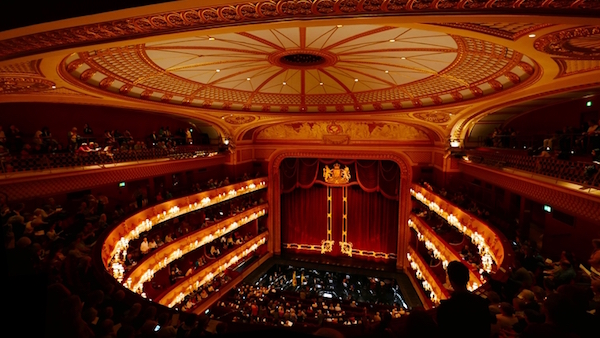
Nearly 300 sensors are helping to improve the efficiency of M&E maintenance at the Royal Opera House (ROH) in London.
The Grade I and Grade II-listed building’s ceiling features a frieze in gold leaf, one of the oldest in Europe. It also houses important manuscripts and old documents in its archives and thus requires careful attention, humidity regulation and maintenance to preserve its legacy.
A further challenge is the fact that the ROH has special lighting, which generates a lot of heat, so the building has a variety of cooling equipment and fans. The cooling equipment produces condensation and water, which can damage the ceiling, or in extreme cases, lead to its collapse.
To prevent this from happening, the engineering team from the ROH’s M&E maintenance supplier, Integral, had to do manual checks twice a day, which was labour-intensive and inefficient.
Nordic sensor expertise
Having previously worked with smart building platform specialist Infogrid to deploy a pipe monitoring solution for legionella compliance featuring sensors from Norway-based Disruptive Technologies, Integral turned to the two businesses again to protect the ROH’s ceiling and archives.
There are now 283 wireless sensors from Disruptive Technologies fitted at the ROH.
A total of 213 tap sensors help with the automation of legionella compliance, which has reduced the need for manual work and as a result, 13% of mundane resource tasking is now replaced by predictive and preventative maintenance activities.
Plug and play sensors
Disruptive Technologies’ wireless sensors are now available in plug and play kits, allowing asset owners and contractors to explore use cases and validate the technology. The kits include five sensors (temperature, proximity, touch, humidity and water), a 4G cloud connector, documentation and access to the web app. The sensors stick anywhere and last up to 15 years, the company claims.
Bengt Johannes Lundberg, CEO of Disruptive Technologies, said: “The kit will allow developers a hassle-free way to validate our technology before integrating the sensors into an upcoming project. Developers are now able to test, explore, and have confidence in our solution and tiny sensors, empowering them to think bigger with smaller.”
Three humidity sensors and two temperature (trace heating) sensors drive trend analysis on plant behaviour and allow the teams to manage air temperature and moisture levels more accurately. Via Infogrid’s platform, Integral’s team receives alerts for cooling and leakage, and can check that the equipment’s temperature and humidity are within normal operating limits.
Data from these sensors has helped prevent breakdowns and assure air quality in areas where sensitive materials are stored. In addition, the solution provides historical sensor data about temperature and humidity, which helps the Integral team spot trends and make proactive decisions that protect and preserve the building, shifting from reactive to preventative maintenance.
Finally, 65 water sensors are dispersed across the plant on the building’s sixth floor to prevent any incidents manifesting in moisture damage to the floor below. The fifth floor acts as the base structure to which the unique ceiling friezes are attached.
Leak detection on the fifth floor has become a critical automated monitoring activity: the data-driven, condition-based solution has dramatically reduced the need for manual leak checks, saving the team “hundreds of labour hours”, according to Integral.
An ROH spokesperson said: “The Royal Opera House is a unique historical building, with some beautiful heritage, which it is our mission to preserve for future generations. Integral’s use of Infogrid’s cutting-edge technology to assist in the maintenance of the building has not only resulted in reduced risk, but has added value by freeing up the facilities team to concentrate their efforts on maintaining other parts of the building.”













